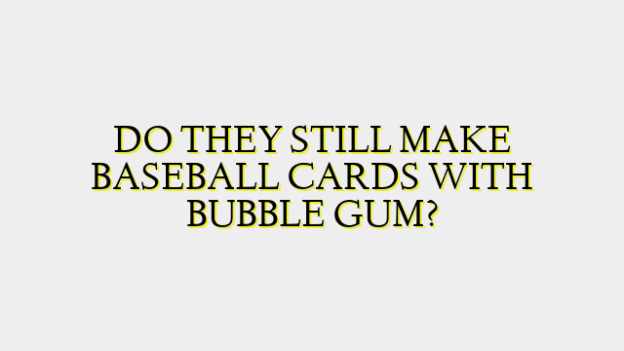Baseball cards have been a collectible item for over a century and many people wonder if they still have value in today’s digital age. The answer is a definitive yes – baseball cards can still hold significant financial value, especially for rare and vintage cards in good condition. The value of any given card depends on many factors that collectors and dealers closely evaluate.
One of the primary things that gives baseball cards lasting value is nostalgia. For many people who grew up in the 1950s-1980s era, collecting cards was an integral part of their childhood and love of the game. Even younger generations today recognize the nostalgia and history captured in vintage cardboard. As long as baseball itself endures as America’s pastime, there will likely remain a market for those classic cards that stir fond memories for older collectors and cultural historians.
Card condition is obviously a major determinant of value. It’s rare to find pristine, gem mint vintage cards in their original packaging. Even minor flaws can significantly reduce a card’s worth. For example, a mint 1952 Topps Mickey Mantle rookie card in a PSA/BGS 10 gem rating has sold for over $2 million. The same card in poorer condition might fetch only $50-100K. Advanced grading services like PSA, BGS, SGC provide consistent standards to assess condition – which increases market liquidity and trust in a card’s value.
Of course, the individual players depicted hold immense sway over card prices. Superstar rookie cards from baseball’s golden era – Mantle, Ted Williams, Willie Mays, etc – will likely remain blue-chip collectibles. But stars of today like Mike Trout, Ronald Acuna Jr also have cards that stand to gain substantial long-term worth if they cement careers among the sport’s greats. Even obscure 1950s players like Sherm Lollar can suddenly spike in demand/value when a set they appear in appreciates over decades of collecting.
Beyond nostalgia and player/condition factors, simple supply and demand economics apply strongly to the baseball card market. The relative scarcity of any given vintage cardboard release is a primary driver of increasing collectible prices over the long run. Common 1959 Topps cards are less than $1 while rarer subsets and parallels in the same set can sell for thousands due to their limited initial print runs decades ago. This supply vs demand balance ensures continuing high valuations for vintage cards, especially as older collectors thin collectible holdings over time.
While the most iconic vintage cards are out of reach price-wise for most hobbyists, more affordable options still abound. Complete commons-based vintage sets can be assembled in the $100s-1000s and show steady appreciation potential over time. Modern stellar rookies from the late 1980s to today remain nicely affordable but hold future blue-chip potential as those players careers unfold. There are also many worthwhile specialty releases for collectors – like unique parallel, serial numbered, auto/relic cards where individual values are less tied to massive vintage/rookie cards markets.
Trading card companies release new products every year, securing ongoing interest in the industry as new stars are introduced and current players have new cards issued. Popular modern brands like Topps, Panini, Bowman produce affordable wax box breaks, blasters and hobby packs that give collectors fresh cardboard chasing. Parallel modern and vintage parallel card markets have also energized the hobby in recent decades with more esoteric collecting variations between brands. These expanding card categories help spread collector interest – and ensure ongoing demand and value across the industry for years ahead.
In summary – while some rare 1939 Playball cards might set new record prices with each passing decade, most vintage baseball cards provide steady long-term financial value to collectors simply by retaining utility as accessible historical artifacts in a stable, well-supported market. As long as the game of baseball survives into the next century and beyond, vintage cardboard value seems secure through both rarity factors and the nostalgia it evokes for past eras of America’s pastime. With evolving collector tastes and new cardboard being made every year, baseball cards continue to hold great worth both financially and culturally within the sports collecting world. The heyday of the1980s-90s boom may have cooled, but hobby endurance suggests the baseball card business is a solid long term investment even today.

